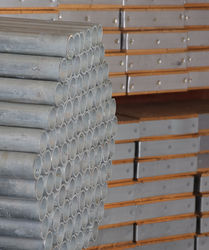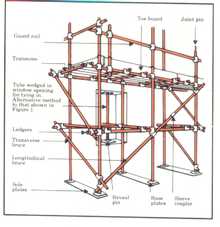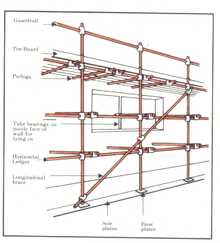The scaffold should be tied into the building at approx every other lift and every 20ft if at all possible, double couplers should be used for connecting ties, if no suitable reveals etc are available then Hilti Rings can be used.
All standards should be plumb and ledgers should be level, ledger joints should be staggered up the scaffold, diagonal bracing on the scaffold face should be used, a handrail is placed on each working lift, brick guards and toe boards are then added, as with all scaffolding, safety is most important and only a fully competent person should erect scaffolding. Click Here for our Tube, Board & Fitting Price List | 




